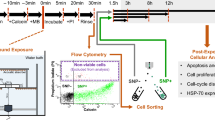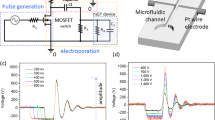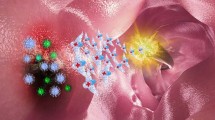Abstract
Uptake of naked functional DNA into mammalian cells can be achieved by a number of physical methods. However, for most of these techniques possibilities for therapeutic in vivo applications – especially to solid organs – are often limited. In this report, we describe shock wave permeabilization as a new physical gene transfer method, which can be easily applied, provides great flexibility in the size and sequence of the DNA molecules to be delivered, and which should exhibit an advantageous security profile in vivo. Upon exposure to lithotripter-generated shock waves eukaryotic cells display a temporary increase in membrane permeability. This effect was shown to be caused by cavitation resulting in the transient generation of cell pores which allows the direct transfer of naked plasmid DNA. Shockwave transfection of a variety of cell lines was demonstrated. Since shock waves can be well focused within particular body regions, future applications of extracorporally generated shock waves to tissues simultaneously perfused with DNA solutions might open up the possibility of achieving a regionally enhanced in vivo gene transfer.
This is a preview of subscription content, access via your institution
Access options
Subscribe to this journal
Receive 12 print issues and online access
$259.00 per year
only $21.58 per issue
Buy this article
- Purchase on Springer Link
- Instant access to full article PDF
Prices may be subject to local taxes which are calculated during checkout
Similar content being viewed by others
Author information
Authors and Affiliations
Rights and permissions
About this article
Cite this article
Lauer, U., Bürgelt, E., Squire, Z. et al. Shock wave permeabilization as a new gene transfer method. Gene Ther 4, 710–715 (1997). https://doi.org/10.1038/sj.gt.3300462
Received:
Accepted:
Issue Date:
DOI: https://doi.org/10.1038/sj.gt.3300462
Keywords
This article is cited by
-
Customizing cancer treatment at the nanoscale: a focus on anaplastic thyroid cancer therapy
Journal of Nanobiotechnology (2023)
-
Improving Molecular Therapy in the Kidney
Molecular Diagnosis & Therapy (2020)
-
Low-energy shock waves evoke intracellular Ca2+ increases independently of sonoporation
Scientific Reports (2019)
-
Shock Wave-Induced Damage and Poration in Eukaryotic Cell Membranes
The Journal of Membrane Biology (2017)
-
Tandem shock waves in medicine and biology: a review of potential applications and successes
Shock Waves (2016)



